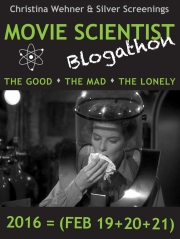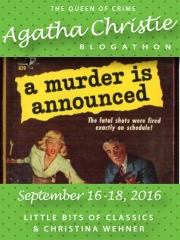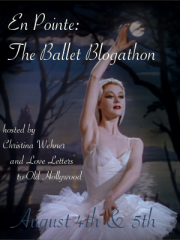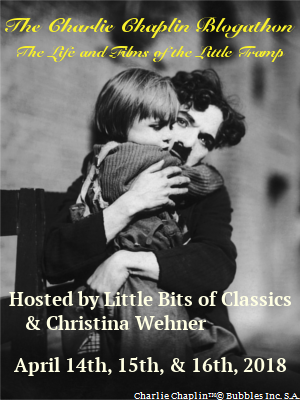 Fred Astaire has always been primarily known for his partnership with Ginger Rogers and the nine movies they made together at RKO (there was a tenth at MGM). After six of them, Fred Astaire and Ginger Rogers wanted to take a brief break, during which he made A Damsel in Distress, released in 1937. However, it was a total flop and many people believe it was because of the absence of Ginger Rogers or, in fact, very much romantic dancing at all between the central couple.
Fred Astaire has always been primarily known for his partnership with Ginger Rogers and the nine movies they made together at RKO (there was a tenth at MGM). After six of them, Fred Astaire and Ginger Rogers wanted to take a brief break, during which he made A Damsel in Distress, released in 1937. However, it was a total flop and many people believe it was because of the absence of Ginger Rogers or, in fact, very much romantic dancing at all between the central couple.
As a result, A Damsel in Distress has always been a bit of a neglected child, always dismissed as not being up to the Astaire and Rogers sublimity of dance. However, being a Fred Astaire completest (I am now three movies away from having seen every movie that Fred Astaire danced in – acting parts don’t count), in love with George Gershwin’s music and songs and a huge fan of P.G. Wodehouse I was very eager to see this one. I was not disappointed, either. The movie introduced several now classic songs by Gershwin, the dancing – even if it is not done romantically – is tremendous fun, George Burns and Gracie Allen are a hoot and the supporting cast is generally amusing and the humor droll that I found the movie difficult to resist.
The screenplay was written by P.G. Wodehouse and it was an adaptation of his own 1919 novel of the same name. In the original book, the main character is George Bevan, a composer, but the main character was changed to Jerry Halliday and his profession became that of an entertainer (which makes sense, since dancing and entertainment is what Fred Astaire did).
The damsel who is in distress is Lady Alyce Marshmorton (Joan Fontaine). She is in love with a man she met in Switzerland the previous year but is being kept away from him by her family, primarily her aunt Caroline Byng (Constance Collier), who wants her to marry her step-son, Reggie Byng (Ray Noble). All Reggie wants to do is play his various instruments, like the trumpet, piano and bagpipe. And all Alyce’s father, Lord Marshmorton, (Montagu Love) wants is to be left alone so that he can tend his garden.
Meanwhile, the servants below have organized a sweepstake. All the names of the likely candidates for Lady Alyce to marry are put in a hat and each person draws. Keggs the butler (Reginald Gardiner) manages, through slight of hand, to draw the favorite, Reggie Byng. However, the footman, Albert, has more imagination and blackmails his way in to the sweepstake (he was originally excluded because he is still a child) and choses a “Mr. X” as his ticket.
Lady Alyce sneaks off to London, but is followed by Keggs and in an effort to get away from him, she hops into a random taxi, which happens to contain Jerry. He is delighted and immediately jumps to her rescue by fighting off Keggs. Albert sees the whole things and believes that Jerry is the Mr. X of Switzerland and sets out to encourage Jerry as much as he can. He sends him a letter supposedly written by Alyce, telling him how much she loves him. Jerry sets out for Belpher Castle along with his press agent George (George Burns) and his agent’s secretary, Gracie (Gracie Allen).
Once there, all sorts of misunderstandings occur. Jerry moves forward with the utter conviction that Alyce is in love with him, while she just thinks he is here to assist her in her problem. Her family is convinced that he is the mystery man from Switzerland and Keggs is doing everything in his power to sabotage Jerry and prevent Albert from winning the sweepstake. Jerry mistakes Lord Marshmorton for the gardener and employs him to send a message to Alyce and finally, when Keggs realizes that Alyce is falling in love with Jerry, Keggs forces Albert to switch sweepstake tickets with him and suddenly Keggs is on Jerry’s side while Albert is seeking to sabotage him.
Gracie Allen and George Burns, although they don’t have a particularly central role to play, almost steal the film, especially Gracie Allen. She plays a not-too-bright secretary who takes things too literally and is only being kept on because her father helped George. Burns and Allen were known for their radio and TV show, but before, they had done vaudeville and you can see that in the film. They have several dances with Fred Astaire and although they were never known for it, they actually dance quite creditably.

George Burns, Gracie Allen and Fred Astaire doing the whisk broom dance – George Burns isn’t quite up to Gracie and Fred’s dancing
The dances are quite fun. Fred Astaire dances in the street near the beginning of the movie, with cars and cabs driving behind him. Later, he dances with George and Gracie in his cottage near Belpher that they do with whisk brooms. Later, there is a rather extraordinary dance between the three of them in a fun house at a fair.
The one dance that is rather less that extraordinary, that is always commented on, is the one dance between Joan Fontaine and Fred Astaire. Poor Joan Fontaine was only nineteen and was cast, presumably, because she was British (it’s hard to imagine Ginger Rogers in the role), but she could not dance and it is very obvious. She later joked to Fred Astaire that A Damsel in Distress set her career back four years (it was in four years that she became a star and won an Oscar nomination for Rebecca) and she definitely heard about how bad her dancing was when the movie came out. She is probably the least adept of all Astaire’s partners, but fortunately the movie gives Astaire many other things to do, like introduce the song “A Foggy Day” and dance between a drum set.
George Gershwin and his brother, Ira, had written all the songs before the movie began filming. During that time, Gershwin was feeling extremely ill, but no one really thought it was serious. However, tragically, while the movie was still in production it was discovered that he had a brain tumor an he died before the movie was even finished. He was only thirty-eight. It was devastating to his family and friends. Fred Astaire had known him for years and was greatly grieved and Ira Gershwin never really recovered from the loss. And although Ira Gershwin would go on to write lyrics for other songwriters – Jerome Kern and Harold Arlen – he had lost the zeal for it he had when he collaborated with his brother.
The songs they wrote are really excellent, though. The movie introduced two Gerswhin standards: “A Foggy Day” and “Nice Work If You Can Get It,” as well as some other good songs like “Things Are Looking Up,” “I Can’t Be Bothered Now” and “Stiff Upper Lip.”
Despite being a flop, the movie has a charm of its own; a unique Astaire film that is less romantic (in terms of dances), but more than makes up for it with it’s cast, fun dances and definitely by the presence of Burns and Allen.
As an example of the fun, here is the whisk broom dance by Fred Astaire, George Burns and Gracie Allen.










FictionFan
October 4, 2014 at 11:24 am
George and Gracie are pretty good, but you can really see Fred having to hold himself in so’s not to outshine them too much… Sounds like a fun film. 🙂
LikeLike
christinawehner
October 4, 2014 at 1:05 pm
You make a great point! I hadn’t thought about that, but that is one of things I think I love about Fred Astaire, how he tries to adapt himself to his dancing partners and make them look good and not just himself. He does seem to have to do that a lot in this one, especially with Joan Fontaine. 🙂
LikeLiked by 1 person
ashokbhatia
October 7, 2014 at 12:49 am
In this one, I just love Joan’s character!
LikeLike
christinawehner
October 7, 2014 at 9:48 pm
Yes, and she’s so different from Ginger Rogers! I really enjoyed her as the proper English lady and Fred Astaire as the brash American dancer. It was a different combination for a Fred Astaire film that I liked!
LikeLike
ashokbhatia
October 8, 2014 at 9:32 pm
Good perspective!
Allow me to share this post with you, please:
LikeLike
christinawehner
October 13, 2014 at 3:34 pm
Thanks so much for sharing this post! I thoroughly enjoyed it and your wonderful examples of just how individual, quirky and clever Wodehouse’s women are. I also was struck by your comment regarding how the men rush to their ladies side, like knights of chivalry. It makes Wodehouse seem like quite the romantic, despite his more humorous tone.
LikeLike
ashokbhatia
October 14, 2014 at 9:45 am
Yes, often we tend to ignore his emphasis on ‘the psychology of the individual’! He uses it to state deep thoughts about life in general – a treasure trove, if you look at it that way!!
Am happy that this post delighted you in some way. Thank you.
LikeLiked by 1 person
BNoirDetour
January 13, 2016 at 11:22 am
How have I not seen this? I’ve read the novel and love it (so much like the Blandings stories). Great film cast, so I’ll definitely look it up! Thanks!
LikeLiked by 1 person
christinawehner
January 13, 2016 at 1:08 pm
The film seems to have fallen by the wayside, perhaps because it was made in between Fred Astaire’s films with Ginger Rogers. Joan Fontaine can’t dance at all, but there’s so many other fun things about it…and the music is wonderful. Burns and Allen are a hoot, too!
LikeLiked by 1 person